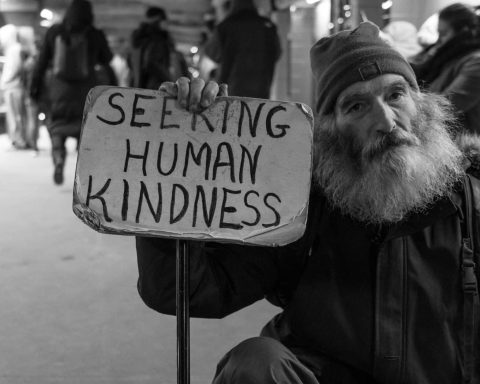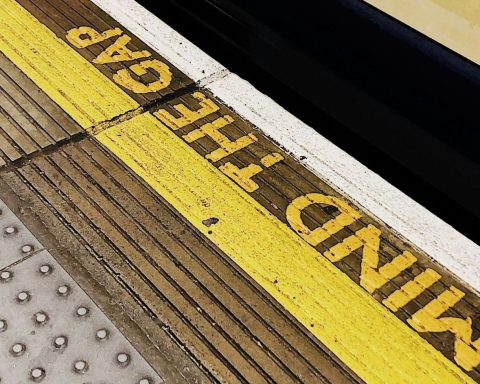 Sati Heer-Stavert is a GP and Clinical Education Fellow at The University of Warwick.
Sati Heer-Stavert is a GP and Clinical Education Fellow at The University of Warwick.
He is on twitter: @SatiHeerStavert
A patient recently asked me when the practice was going to open again. I replied that I was, at that very moment, seeing them face-to-face in my consultation room. “I know,” they replied, “but you know what I mean.”
In our media-infatuated world, the mere image of a general practice appearing closed holds more significance than whether it is truly open.1 The power of images in shaping public perceptions of healthcare is not a new phenomenon. In the UK, GPs in particular have inherited cultural legacies ranging from Fildes’ The Doctor through to Berger’s Fortunate Man.2,3 However, the influence of our curated history is challenged by the number of images available today. In 2021, users of Facebook are estimated to have shared 240,000 photographs every minute.4 With a deluge of data, there is an incentive for users to selectively share items that attract attention rather than accurately conveying everyday realities. Medical imagery, when shared in such contexts is often centred either on narrow spectrum, hard to access or high-cost interventions. Although these services are critical to the health needs of a select few patients, the saturation of modern medical imagery with technocratic motifs is a problem for healthcare systems where holistic generalists have a gatekeeper function. Such images provide wider society with repeated glimpses through the keyhole where the wizard works magic.5
…images provide wider society with repeated glimpses through the keyhole where the wizard works magic
When patients are unknowingly enveloped by illusions, it is unsurprising that rare exceptions of care become routine expectations of care.
Images are therefore more than what they simply record, they create a narrative. The emergence of global pandemic could have been an opportunistic juncture for the limits of atomistic medicine to be laid bare while showcasing a healthcare system operating in synergy. Instead, COVID-19 has accelerated the trend of healthcare imagery to focus almost exclusively on hospital environments. Indeed, at the time of writing, an internet image search for a ‘covid doctor’ will almost never yield a photograph of a GP. Conspicuously absent from this modern exhibition, we are perceived as lazy, in hiding, or even irrelevant despite having a major role in the pandemic response. The experiences of GPs throughout this period are testimony enough but the injustice of this algorithmic verdict is inflamed by the knowledge that GPs have had the highest risk for COVID-19 deaths among doctors.6
However, it is still too early to know what images will eventually be remembered for encapsulating COVID-19. There is, for example, no obvious equivalent to the iconic plague doctor. Yet, emerging themes do offer an insight into how our pandemic doctors will be envisioned by posterity. The face mask is perhaps the most common motif within COVID-19 art and photojournalism but its meaning continues to change as the pandemic progresses. Considered a symbol of medical science by many, oppression by others and concerningly both by some, it is an item that has become overtly politicised like healthcare itself.7
In this vision of superhuman COVID-19 doctors, GPs have been bestowed the power of invisibility.
Cosmopolitan and patriotic sentiments are often invoked, with staff sometimes supporting the globe like Atlas or embracing geographical representations of individual countries. Second World War posters have been refashioned to show front-line health workers wearing PPE. Such healthcare heroism is symbolised with murals depicting staff with angelic wings or wearing superhero costumes.
A closer look at the online photographs of mask-wearing healthcare staff will reveal that very few actually appear to be working in primary care. When taken in context, they are often surrounded by the high-technology paraphernalia of intensivist care. Patients are attached to wires, tubes and in some cases an oxygen canister supplants the position of the bedside relative. This is no GP home visit. The images of the pandemic reveal the doctor-patient interaction as augmented, distracted or even superseded by the idea of impossible heroes or a technology-patient relationship. In this vision of superhuman COVID-19 doctors, GPs have been bestowed the power of invisibility. The fantasy land of images does not acknowledge an individual’s actions if they are not recorded and shared. One of the facets of the existential crisis facing general practice is that of identity and the profession must consider exerting agency over the pandemic story through powerful images. As it stands, it feels as if GPs have been judged in pseudo-absentia.
References
1. Heer-Stavert S. Spectacular healthcare. Br J Gen Pract. 2020;70(699):500. Published 2020 Oct 1. doi:10.3399/bjgp20X712841
2. Moore J. What Sir Luke Fildes’ 1887 painting The Doctor can teach us about the practice of medicine today. Br J Gen Pract. 2008;58(548):210-213. doi:10.3399/bjgp08X279571
3. Feder G. A Fortunate Man: still the most important book about general practice ever written. Br J Gen Pract. 2005;55(512):246-247.
4. User-generated internet content per minute 2021. Statista. https://www.statista.com/statistics/195140/new-user-generated-content-uploaded-by-users-per-minute/. Published 2021. Accessed December 20, 2021.
5. Mathers N, Hodgkin P. The Gatekeeper and the Wizard: a fairy tale. BMJ. 1989;298(6667):172-174. doi:10.1136/bmj.298.6667.172
6. Bandyopadhyay S, Baticulon RE, Kadhum M, et al. Infection and mortality of healthcare workers worldwide from COVID-19: a systematic review. BMJ Glob Health. 2020;5(12):e003097. doi:10.1136/bmjgh-2020-003097
7. Ike JD, Bayerle H, Logan RA, Parker RM. Face Masks: Their History and the Values They Communicate. J Health Commun. 2020;25(12):990-995. doi:10.1080/10810730.2020.1867257
Featured image by Mufid Majnun on Unsplash







Excellent observations.
Sadly we have a health Secretary who colludes with the popular press in sidelining GPs and their contribution
Ben Hoban is a GP in Exeter. Anyone seeking proof that life doesn’t always live up to expectations need only consider the humble hamburger. Several…